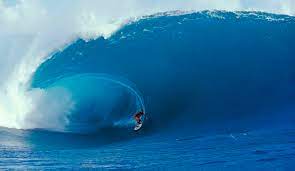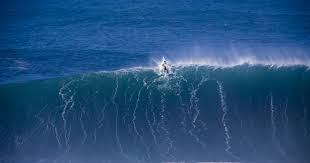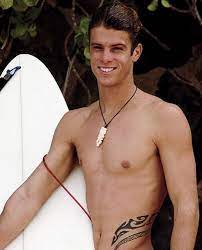
The death of Malik Joyeux on December 2, 2005, was a shocking reminder of the dangers involved with professional surfing.
Born in France on 31 March 1980, his family moved to the small island of Moorea in French Polynesia where he discovered his love of surfing. He had a very humble beginning, living for a few years with his mother and two siblings in a wooden hut on the beach with no walls, and just a roof for shelter, the one saving grace being the proximity of the sea mere meters away.
It was inevitable that surfing was going to be his passion in life, especially when his older brother, Teiva, became a professional windsurfer and kitesurfer and moved to Hawaii.
Malik followed in his footsteps as soon as he was financially able to do so, moving to Tahiti where he continued to hone his skills as a professional Big Wave surfer. The island was a perfect fit for him, a village called Teahupo’o being recognized as having some of the heaviest waves in the world, some ascending to as high as 23feet.
Many world-class tournaments were held here, such as the Billabong Pro Tahiti surf competition every year, and it was in 2003 that Malik seriously made a name for himself, successfully surfing the biggest wave ever ridden.

His last competition was in Oahu’s Pipeline in Hawaii, where the waves were easily climbing to over eight feet in height. He had surfed these waves countless times before so was not intimidated by the size of the waves nor the ferocity of the sea, yet at the same time did not ignore the ever-present dangers of his extreme sport.
Uncharacteristically, as he rode the waves that day, the nose of his board accidentally penetrated the face of the wave ever so lightly, effectively crippling his much-needed speed. His years of experience allowed him to recover slightly, adjusting to the flow of the sea, to stay upright. but it was for nothing.
Just like that, suddenly, the force of the wave dragged him ruthlessly underwater, engulfing his board and snapping it in two as if it was made of balsa wood, and, worse, separating him from the leash. Not being attached to the board made it harder for rescuers and other surfers to spot him in the roiling waves.
It was a challenging search under those conditions and it took over 15 minutes until he was found by surfer Myles Padaca, on the Pupukea beach break located off to the right of where the competition was being held. With the help of other surfers, he was brought ashore where paramedics attempted CPR.
Despite their best efforts, it was obvious that he had been rendered unconscious by the fall and that he had been underwater for far too long. He was pronounced dead that day, claimed by the sea that he had lived on for most of his life.

